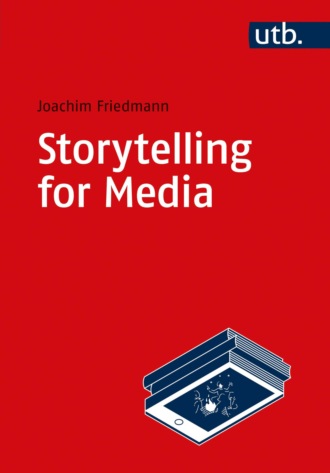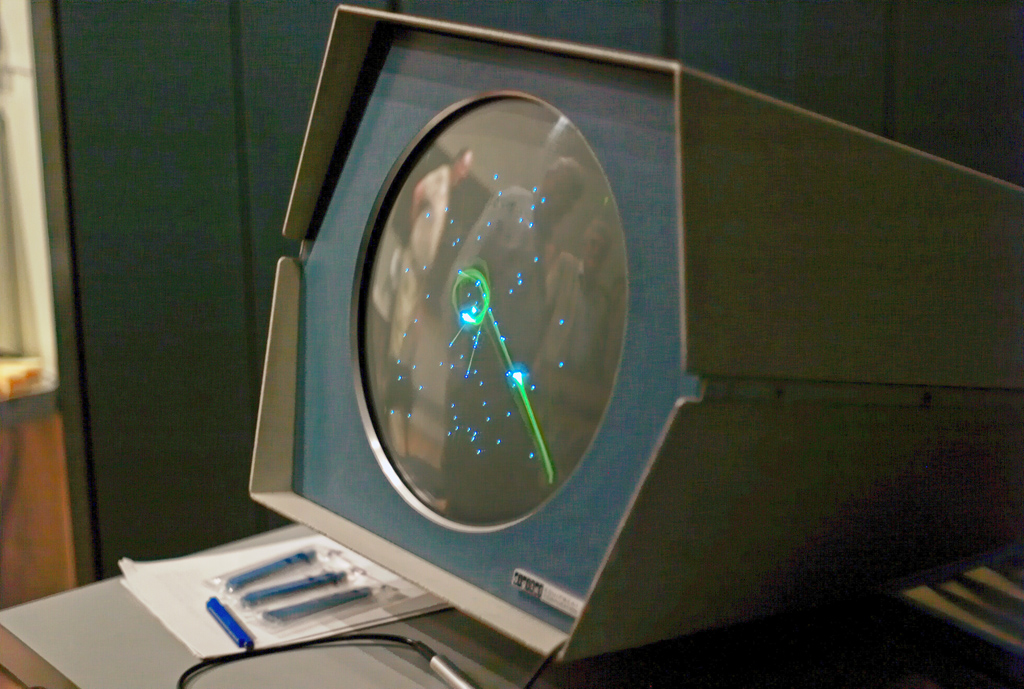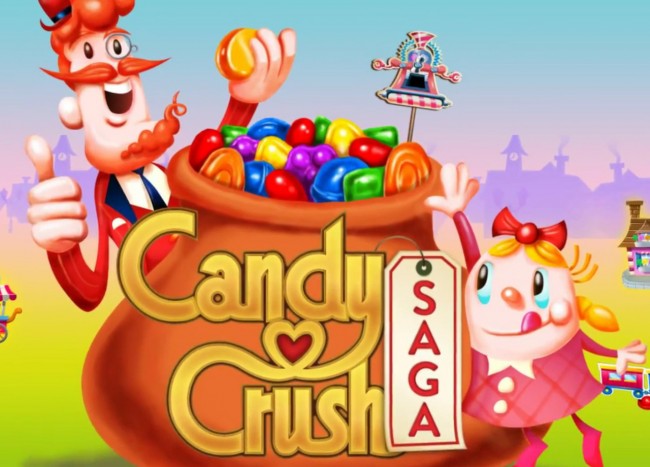
Полная версия
Storytelling for Media
The model is not only applicable to verbally conveyed narratives, but the semantics of space and the associated transgressions of boundaries can also, in principle, be depicted in all media. Although most of the film Titanic is set on the ship of the same name, semantic spaces can also be found here, including the boundary crossed by the main characters. The ship is divided into upper and lower decks, on which the members of the respective social classes travel, according to the topological classifications of the upper and lower classes. Jack, a penniless artist from the lower deck, meets Rose, a young woman from the upper class, while she is trying to kill herself. He prevents her from committing suicide and is invited to a dinner on the upper deck, thus crossing the semantic social border. He asserts himself in the upper ballroom during dinner and wins the dining party’s sympathy, although Ruth, Rose’s mother, challenges him with mocking remarks. Thus, Jack also proves that he is a real archetypal hero, a “master of the two worlds” (212–220) in the sense of Campbell because the hero of the monomyth can move in both rooms. But now it’s up to Rose to discover her potential as a hero. Jack invites her to a party on the lower deck. She sneaks out to the party, overcoming the topographical border, and then she goes, against convention, to the lower deck, and thereby also crosses a social border because as a member of the upper class she is not allowed to join the lower social classes. And she crosses another border as she celebrates on the lower deck because wild, exuberant dancing to bagpipes and fiddles is no suitable pastime for a girl from the upper class, which is made clear by a parallel-cut to the stiff, high-society activities happening on the upper deck. Rose also becomes a master of the two worlds when she impresses the party society on the lower deck with a dance routine and reaps applause for it. The Titanic is divided into top and bottom as described in Lotman’s model, with the semantic attributions of rich vs. poor, drive suppression vs. joy of life, and thus, also, reason vs. love. Rose loves Jack but is pressured to marry the wealthy Cal, because, as we learn in the course of the story, the father has left the family in debt.

The cover illustration of the novel Blauvogel: Georg Foster, descended of a white family, is now a member of the Iroquois Native American tribe. Courtesy of Verlagsgruppe Beltz.
Even in interactive media, corresponding design strategies are demonstrable. Lara Croft, the protagonist of the Tomb Raider games, is battle-tested, but at the same time a scientist, and thus a representative of rationality and civilization. Accordingly, she begins her first adventure in a luxury hotel, the Hotel Imperial in Calcutta. Soon after, we find her in a new semantic space and she has to fight her way through an inhospitable Andean landscape with towering mountains. In contrast to the narrow hotel space, the new topography is a wide mountain landscape, untouched by human civilization, highlighting the sense of oppositions of low vs. high, narrow vs. wide, and culture vs. nature. At the end of her journey through the Andes, the protagonist finds herself in front of a huge gate decorated with Aztec signs – the entrance to the ancient, ruined City of Vilcabamba. When Lara passes through the gate, she, the hero, crosses the threshold to the world of adventure in the sense of crossing the border, and thus begins the actual game in which the player can participate interactively – analogous to the movement Campbell suggests for the monomyth in which the main character crosses the border from ordinary to the magical world.
In the examples given above, it becomes clear that the consequences of a border crossing, even if it takes place, may differ: the hero can also fail in crossing the border or pay for it with his life, as Gustav von Aschenbach does. In Titanic, Jack also has to die, but thanks to him, Rose learns what she really wants and does not return to her old world but begins a new, self-determined life as an artist, using Jack’s last name. Her border crossing is successful and final.
In contrast, narratives in which the crossing of borders is reversed are also conceivable. In the 1950 western Broken Arrow, white adventurer Tom Jeffords crosses the border between the settlers’ land and the Native Americans’ and goes to an Apache tribe to negotiate peace with Chief Cochise. He gains the respect and friendship of the natives and finally marries Sonseeahray, the shaman of the tribe. When she is shot by a white man, however, Jeffords returns to his own settler world. The crossing of the border is reversed, probably also in consideration of the taste of the American public of that time. Anna Jürgen’s novel Blauvogel (Blue Bird), which was published in the GDR in the same year, describes a different movement. Nine-year-old Georg Ruster, a son of white settlers, is kidnapped and adopted by indigenous people. After having great difficulty getting used to life with the natives, he finally becomes a respected and beloved member of the tribe, taking his new Native name, Bluebird. When, under pressure from the white military, he is forced to leave the tribe and return to his old family, he finds himself alienated from his previous life and flees back to the indigenous tribe. His crossing of the border is therefore final. Stories that describe a constant crossing of borders and the associated transformation are also called revolutionary in narrative science. Texts that describe a failed border crossing such as in Death in Venice or a reversed border crossing as in Broken Arrow often confirm the status quo of a given order and are called restitutive.
EXERCISE: Try to describe the oppositional concepts and spaces in your favorite narratives. Which borders are crossed, which semantical concepts are represented?3.2 Other Options for Spatial Semantization
Lotman’s model is convincing in the practical design of narratives through its clear, comprehensible logic and simplicity. But at the same time, it can be overly reductive. For example, one has to ask whether there are always only two spaces represented in narrative reality. Authors from migrant cultures such as Hanif Kureishi or Zadie Smith thus consciously introduce further (intermediate) spaces, “contact zones” and “third spaces,” into postcolonial literature. Lotman, too, expanded his approach and introduced the concept of sub-semiospheres, through which, in turn, new spaces of meaning can be opened up.
In this respect, it must be examined to what extent Lotman’s considerations can also be meaningfully extended in practical application. It can be shown by some examples that a semantization of space cannot only be described in a topographical or topological dimension. If one examines the spatial design in The Lord of the Rings, for example, color semantization catches the eye. Spaces in which green dominates, such as The Shire or Lothlórien, have positive connotations, while in Mordor, the realm of evil, black dominates. In the Elvish language Sindarin, “Mordor” literally means “Black Land.” One could even interpret a phonetic-semantic design in the setting names. Thus, the vowels “o” and “u” obviously stand for the evil, black side. The refuge of the evil adversary Sauron, after his first defeat, is called Dol Guldur. Then he conquers the kingdom of Mordor, whose largest region is called Núrn and whose highest mountain rises on the Gorgoroth plateau. After the city of Minas Ithil is conquered by the evil Nazgûl, it is renamed Minas Morgul.
It must also be questioned whether the existence of two semantic spaces and the associated topographical boundary is in fact a fundamental condition for the subject of a narrative text. Even in the film, which is predestined for spatial depictions due to its visual level of reception, this is apparently not a compelling condition when one considers the genre of intimate theatre, e.g., Lumet’s 12 Angry Men, whose plot unfolds in a single jury room. This space is highly semanticized by the experiential knowledge of the recipient. The recipients know that justice is determined and administered in this space, that guilt and innocence and – in this concrete example – even life and death are decided here. But the border and the second semantic space are missing. Nevertheless, oppositional relationships can of course also be identified in this narrative, such as guilt vs. innocence, morality vs. law, racism vs. anti-racism, opportunism vs. loyalty to principles, but these are not bound to concrete spaces.
A similar problem arises when considering games, particularly the so-called “casual games” or games with less elaborate graphics and history. Especially in the early arcade games, there was often only a single game space or setting available, due to the lack of computer capacity at that time, e.g., in games like Pong, Space Invaders, or Asteroids. Since no second space can be constructed here with the corresponding oppositions, no border crossing can take place and semantization in the strict sense of Lotman is not possible. Nevertheless, these games contain narrative elements with the corresponding semantizations despite their simple graphics and limited representational potential.

Spacewars! is considered by many to be the first computer game ever made. Here the game is shown with original source code running on a PDP-1. Image moral authors: Martin Graetz, Stephen Russell, Wayne Wiitanen, Peter Samson, Dan Edwards, Alan Kotok, Steve Piner, and Robert A. Saunders.
In one of the very first computer games, Spacewar!, programmed in 1961 by students of the Massachusetts Institute of Technology, the setting is the “final frontier” – the space beyond earth. This is fitting for the genre, because in all phases of the history of computer games the universe, foreign planets, space stations etc. are constantly recurring locations, be it in Galaga, Doom, or Halo. Space Invaders from 1978 is regarded as the first commercially successful space shooter and triggered the development of a whole series of games that also chose space as their setting. However, the design of the setting of these computer games is still rudimentary – in the case of Space Invaders there is nothing but four blocks behind which the player’s spaceship can seek protection. The setting is supported by other factors, such as the naming of the game and the design of the machine. Its surface is decorated with representations of aliens, rockets, planets, stars etc. to illustrate the science fiction setting of the game. With Phoenix and Galaga, the setting becomes more elaborate and already shows a star-studded galaxy in the background. It is not the richness of detail that is decisive here, but the semantization of the game space through the activation of a narrative script. Media scientist HENRY JENKINS calls this strategy of game design “evocative spaces.” He compares the game designer’s work here with the design of an amusement park, in which the attractions are often based on well-known narrative genres and settings such as the “wild west,” a fairytale environment, or a pirate ship. According to Jenkins, game designers use the same strategy. Because one falls back on the narrative competences of the recipients, the design of the world is often subcomplex and can be carried out in a suggestive or schematic way. In other words, games make targeted use of narrative archetypes or genres in order to semanticize space or integrate the game into a narrative context. The old arcade games, in particular, used this design strategy, since computer technology at that time did not allow sophisticated graphic representation. Thus, in Galaga or Space Invaders, not only does the game space contain rudimentary pixel aliens or spaceships, but also the arcade machine itself is decorated on its surface with aliens, comets, and ring planets to communicate to the recipient that this is a game in a science fiction setting, with the corresponding narrative tropes such as alien invasion, space battles, etc. Similarly, Ghost’n Goblins features ghosts, mythical creatures, knights, and princesses, both on the machine itself and in the game space, to situate the game in the fantasy and fairytale genre and thus activate the corresponding narrative scripts, with oppositional pairs such as everyday world vs. magical world, life vs. death, noble knights vs. dangerous mythical creatures, and beautiful princess vs. ugly monster.
However, there are other possibilities of semantization in the sense of an evocative space that do not necessarily have to resort to existing narrative genres. The handheld game Candy Crush Saga is one of the most successful casual games in history. The idea of the game isn’t new in itself. It’s a so-called “match three game,” (Juul 92) which is all about combining three game pieces of the same colour or shape. Shariki is the first computer game to use this game mechanic. The game is about exchanging neighbouring orbs on the playing field in their places so that three balls of the same colour are combined horizontally or vertically, whereupon they explode and make room for new balls. The game mechanics of Shariki were often copied, e.g. in Tetris Attack, Bejeweled or Candy Crush Saga. Bejeweled was a great commercial success and is considered one of the most important pioneers for the casual games. What is the difference between Shariki and Bejeweled, which both follow the same game mechanics? Apart from minor innovations, Bejeweled stands out for its more complex and sophisticated graphics. The pieces now differ not only in color but also in shape. Furthermore, they are not only abstract shapes or orbs, but Bejeweled game pieces are shaped like jewels. Candy Crush Saga continues in the design of the game space and the game objects. The game pieces differ in colour and shape and are based on sweets. Childlike characters in cartoon style, designed like puppets, lead the player through the setting, where places like the “Pastilles Pyramid,” the “Gingerbread Glade” or the “Bubblegum Bridge” are located.

Tiffi and Mr. Toffee, two of the characters from Candy Crush Saga, with a pot full of jewels. All elements of the game conform to the childlike and colorful design. © Nguyen Hung Vu, 2013 on flickr under CC BY 2.0 https://www.flickr.com/photos/vuhung/10405325514
In the course of the game, cut scenes introduce the problems of the inhabitants of the country: a unicorn has lost its horn, Lemonade Lake has dried up, the Yeti has gotten caught in a sticky-sugar mass. In short: all elements of the game space and the associated world, which were not yet present in Shariki or Bejeweled, are consistently committed to a childlike, colourful, innocent design. Here, too, one can speak of a semantic space, even if at first glance no second, complementary semantic space is realized and no border crossing takes place. But in the form of obstacles, which restrict the recipient in the combination of the game pieces, an oppositional principle breaks into the world of the Candy Crush Saga: black liquorice blocks the movements of the players; colourless jelly surrounds the game pieces and makes them immobile; dark brown chocolate appears in the playing field and restricts freedom of movement. The oppositions colourful vs. colourless, mobile vs. static, light vs. dark are realized here. It should be emphasized that Candy Crush Saga does not tell a real story. Nevertheless, many narrative design elements are used, most consistently spatial semantics. It is not conclusive to determine to what extent spatial semantics are responsible for the success of the game. Nevertheless, it is striking that the same game mechanics become more and more popular with increasing semantization.
In visual narrative media, this semantization can also be applied on a formal level, in which not only the narrated space is designed, but also the space in which the narrative is presented, such as in the first season of the TV series Homecoming. The series takes place on two time levels, in 2018 and four years later, in 2022. In 2022, the protagonist Heidi Bergman has lost her memory and no longer remembers the events of 2018, when she conducted a psychological experiment with war veterans. The two time levels are thus in opposition to knowledge vs. non-knowledge. The formal presentation space is also semanticized because the 2018 story is staged in the conventional 16:9 image format, while the plot in the future is presented in a smaller, square format. Moreover, this time level is desaturated and darker in color. In the 8th episode of the series, Heidi’s memory returns in 2022, followed by a transformational turn (see Chapter 6 Transformation) from non-knowledge to knowledge, which also changes the image format, back to 16:9 as in the past. When Heidi, in the tenth episode in 2018 takes the medicine that caused her to lose her memory, the opposite transformation from knowledge to non-knowledge is realized, thus changing the picture format again from 16:9 to the small, square picture. The different image formats thus not only serve to visually differentiate the time levels but also semanticize the states of knowledge vs. non-knowledge on a formal level.
The semantization of space as a narrative design strategy can thus take place on many levels and go beyond topographical and topological categories. Therefore, it does not have to be adapted to the reduced specifications of Lotman’s model. Nevertheless, it remains Lotman’s merit to have theoretically grasped and specified narrative spatial design and to have shown that the representation of space in narrative texts is different from that in purely descriptive texts. The semantization of space, one can formulate in relation to Lotman, is a distinct narrative strategy that can be applied transmedially.
3.3 Hierarchization of Spatial Events
Actions concerning space and its order obviously have a special meaning in narratives, when Lotman makes a border crossing a definitory prerequisite for the narrative form and the role of the hero. On this basis, the narratologist MICHAEL TITZMANN defines further spatial events and prioritizes them. According to Titzmann, an even higher significance than a border crossing is a so-called border shift. We encounter this motif again in many Westerns and other narratives in the United States that glorify the movement of settlers to the West. There, the white man not only changes the border, but with courage, energy, and determination, also brings law, order, and civilization into a country that was previously described as “uncivilized” – a semantization strategy that many narratives of colonial literature follow. The murder of the indigenous people, which went hand in hand with the moving of the border, was presented as a necessary price to pay for the establishment of the new order. This, of course, is a question of perspective: the rearrangement of the border can also be portrayed as a cruel invasion if it is depicted from the point of view of the indigenous people, as happens in Blue Bird. The myths and stories surrounding the Christian crusades also depict the history of border shifts. From the point of view of the western world, Christianity was brought back to the Holy Land in the course of the border shift, while many modern Muslim stories still portray the trauma caused by the foreign aggressors. But regardless of the reception, the destruction of a border is dramaturgically even more powerful than a shift. Stories that describe the liberation from a tyrannical despot or a totalitarian system often contain the dissolution of a border. Thus the five-part feature film epic Liberation released in 1970 is a dramatized account of the Second World War from a Soviet perspective. At the end of the film, the Soviet soldiers fraternise with German civilians, the political and semantic border that separated the two peoples no longer exists, and the Soviet flag flutters on the Reichstag. Accordingly, the film Good Bye Lenin! (2003) tells the story of the renewed border dissolution after the fall of the Berlin Wall. Protagonist Alexander Kerner’s mother Christiane, a loyal believer in the communist regime, is bedridden with a heart condition, so Alexander and the family try to conceal the fall of the Berlin Wall because Alexander believes that the shock of learning the truth would kill her.
The most significant event, however, is the extinction of a room: when an entire semantic room is destroyed or disappears. Examples of such events are the sinking of the Titanic, the destruction of the Death Star in Star Wars, or the demise of Mordor after the destruction of the One Ring. Mount Doom burns the remaining Nazgûl and covers Mordor with lava with its final eruption. Everything Sauron has built with the power of the One Ring is destroyed, along with its creator. The entire semantic space of tyranny he has erected is destroyed. When socialist rulers, in 1950, demolished the old Berlin City Palace, the resulting worldwide indignation was possibly due to the fact that the destruction of space is perceived as such an important event. The new socialist system, already responsible for a border shift, then destroyed the space of the old order by blowing up an already-damaged building.
Chapter 3 summary:
The space in which the actions and events of a story are portrayed is more than just a stage or a container; it carries meaning and contributes to the production of meaning on a semantic level. This was first described systematically by semiotician Juri Lotman. The setting is thus a semantic field divided into two semantically complementary fields separated by a border. Only the hero of the narrative can overcome this boundary. The two semantic spaces are shaped in topological, topographic, and semantic oppositions. However, a crossing of borders is not a compelling characteristic of every story; semantizations can also be realized without crossing borders, for example through colors, language or the activation of narrative scripts. Media scientist Henry Jenkins calls the latter strategy “evocative spaces.” Space events can also be hierarchized. A border shift or border dissolution is perceived as more significant than a border crossing, a maximally significant event is a destruction of space.
EXERCISE: Please describe the semanticization of two opposite spaces in one of your favorite movies.4 Binary Narrative Oppositions – Opposites Make Sense
4.1 The Meaning of the Narrative
Are there pointless stories? One may have this impression with so-called “fake news,” or with a surrealistic play. However, narrative science has established that stories should always communicate in a meaningful way. The literary scholar WERNER WOLF, for example, sees the narrative as an essential element which offers meaning for human existence, and even sees stories as the most important contribution to the human quest for meaning. In everyday language, this is reflected in Wilhelm Busch’s dictum of “the moral of the story” or in every literature teacher’s question about the author’s intention. At first glance, this finding may seem trivial. Shouldn’t all communication be meaningful? Even a lexical entry, an instruction manual or a mathematical formula such as a² + b² = c², which represents a basis for calculating the proportions of right-angled triangles, are meaningful communications – but they don’t appear to be narrative. The question arises as to the specific manner in which way narratives produce meaning.

